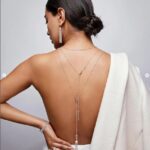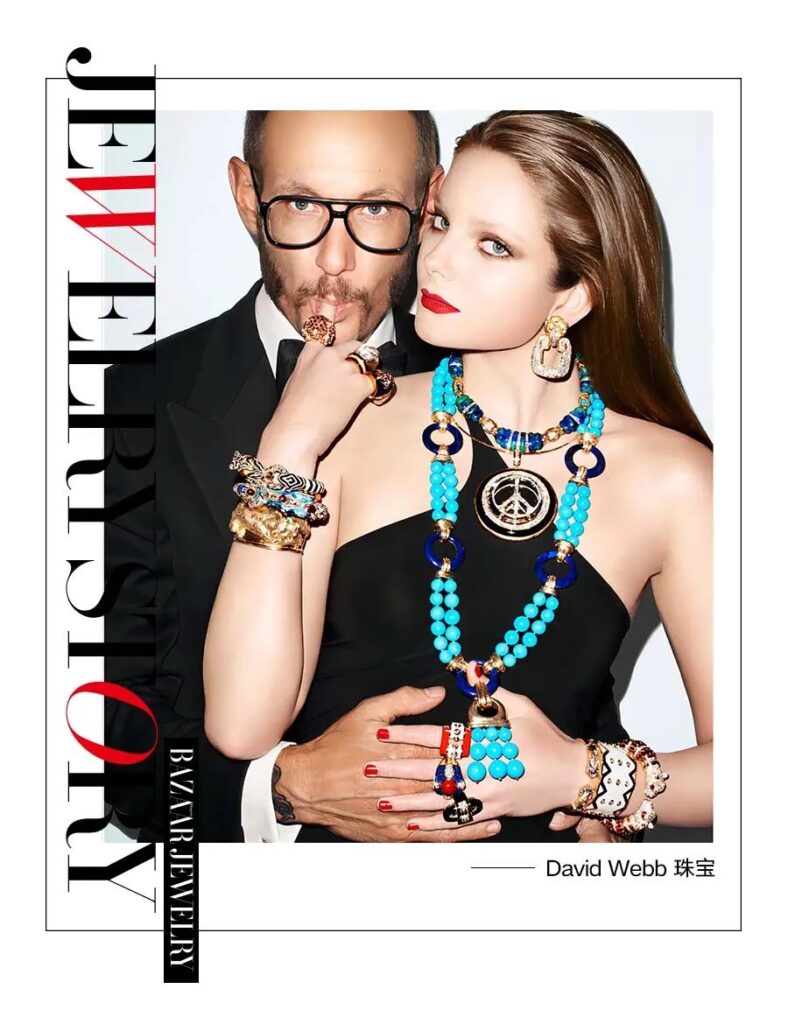
Recently, Sotheby’s held two private collector auctions back-to-back. Interestingly, although both socialite collectors remained anonymous, they shared strikingly similar jewelry tastes. Both auctions featured pieces representative of 20th-century jewelry styles, easily recognizable to any jewelry enthusiast, essentially presenting a “brief history of 20th-century jewelry.”
Among the classic works from well-known brands like Cartier, Van Cleef & Arpels, and Bulgari, one independent designer’s pieces frequently appeared: American designer David Webb.

“Iconic Jewels: Her Sense of Style” Auction
May 2024, Sotheby’s Geneva
Estimated price: 30,000-50,000 Swiss Francs
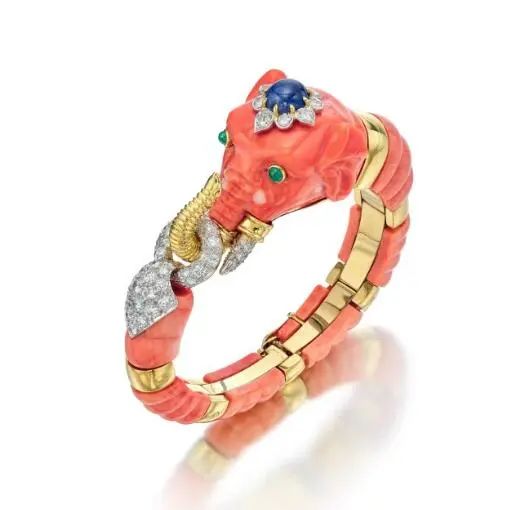
“From the Vault: Exceptional Signed Jewels” Auction
March 2024, Sotheby’s New York
Estimated price: 70,000-90,000 Swiss Francs
Some readers might not be familiar with this name, as this designer was somewhat “heaven-snatched talent,” passing away at just 50 years old. His golden period of creation after founding his brand lasted less than 27 years, yet he is undoubtedly one of the most outstanding American jewelry designers of the 20th century.
David Webb’s design style, themes, and expression methods were highly diverse, yet miraculously, his works remain instantly recognizable, possessing a distinct personal quality. Their common characteristic is vibrancy – from flowers to animals, from bracelets to brooches, you’ll find his designs effortlessly evoke a love for nature’s vitality!
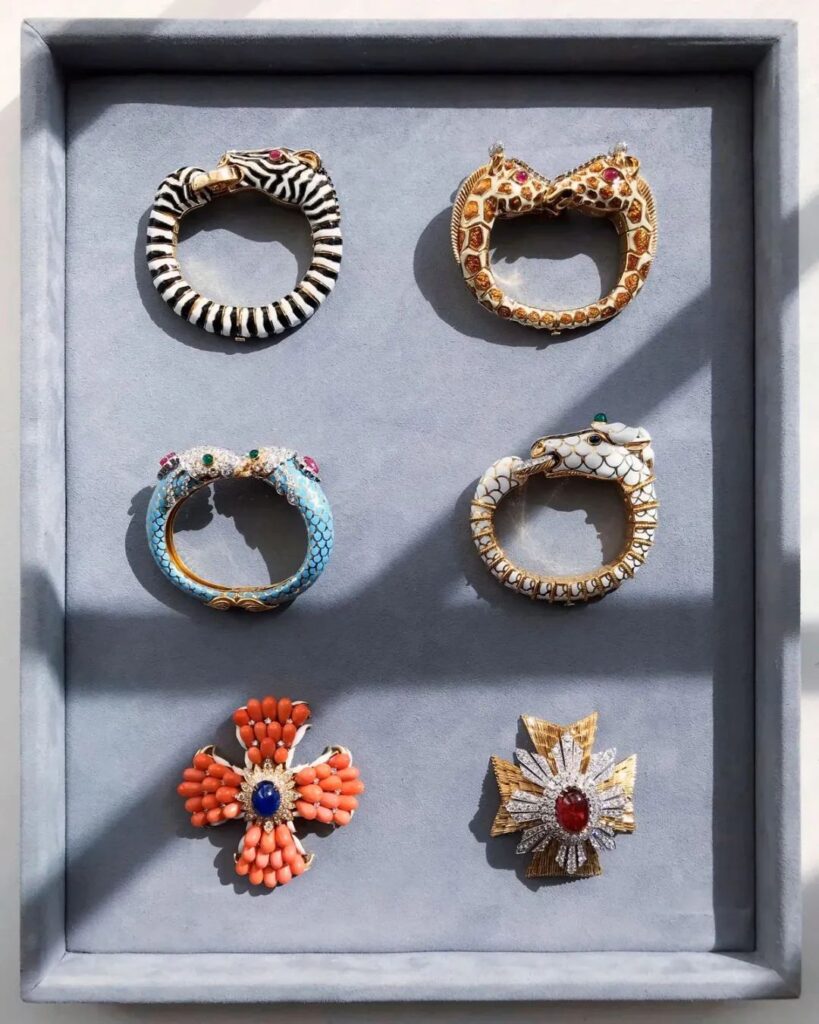
David Webb passed away from cancer in 1975. His successors have consistently adhered to his style, utilizing nearly 40,000 drawings and design archives left by Webb to faithfully reproduce his original designs. Hollywood stars seeking individuality still favor his designs. The appreciation from fashion icons like Helen Mirren, Rihanna, Catherine O’Hara, Cynthia Erivo, and Renée Zellweger has kept this name prominent in the jewelry world.
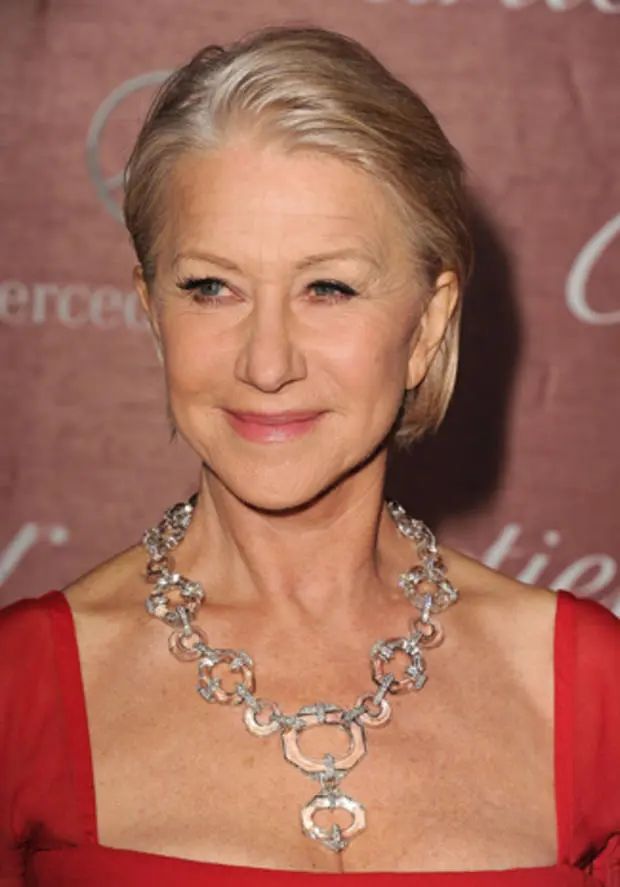

In 1948, at the age of 23, David Webb completed his apprenticeship at his uncle’s jewelry store and moved to New York. He was fortunate to meet his mentor, Nina Silberstein, and together they opened their first store. Webb’s bold creations quickly achieved success. By 1950, his work had already graced the cover of Vogue magazine.
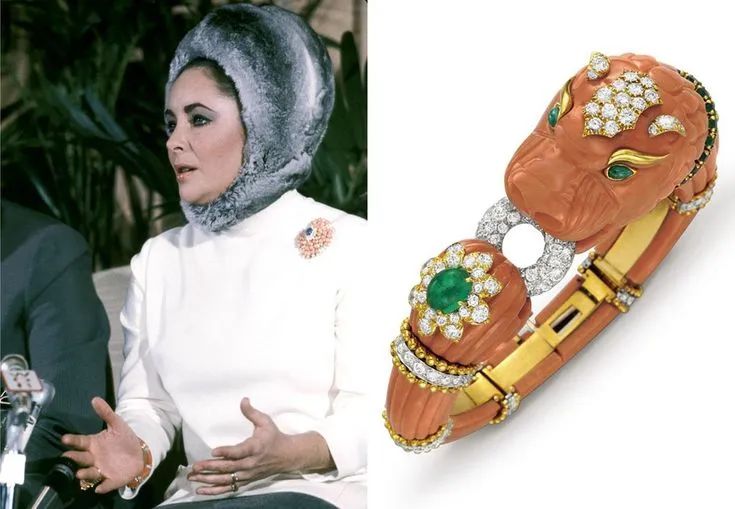
The animal bracelets introduced by David Webb in 1957 became must-have jewelry for icons of the era. By the mid-1960s, his loyal clientele included Hollywood stars and socialites. Jacqueline Kennedy chose him to design official state gifts for the Kennedy administration. Elizabeth Taylor even wore his golden lion necklace on the big screen.

Almost every 20th-century icon was a fan of David Webb. These seasoned jewelry collectors all possessed discerning taste. If you’re considering acquiring his work, you might want to take cues from their collecting strategies.
Jacqueline Kennedy discovered David Webb’s talent while she was still the First Lady. Not only did she buy his pieces for herself, but she also recommended him as the designer for U.S. state gifts. In 1966, Jacqueline commissioned him to design a paperweight using a personally significant coral as a gift for her husband.
Webb fully utilized his strengths, creating a mythical sea lion in gold to complement the coral, imbuing it with his strong personal style.
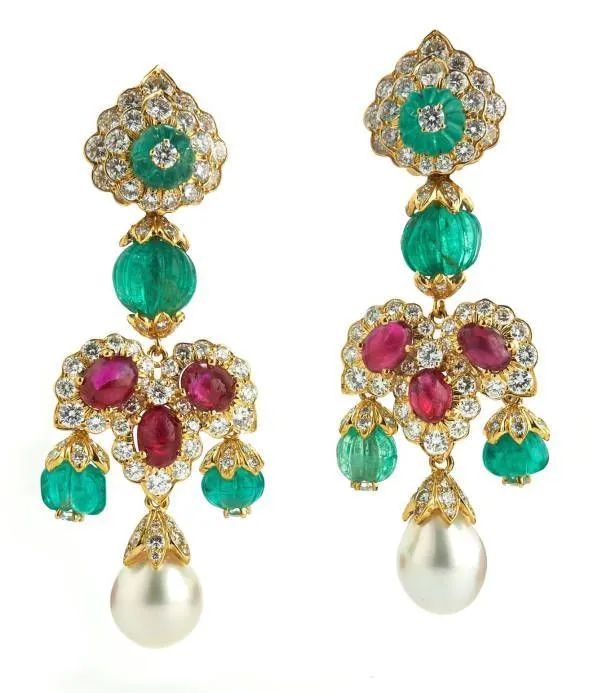
Animals were David Webb’s favorite subject. His Kingdom series created an animal kingdom hidden between nature and mythology. In 1957, he designed the first animal bracelet for Elizabeth Taylor – a golden Makara bracelet set with emeralds and diamonds, inspired by the Indian sea monster.
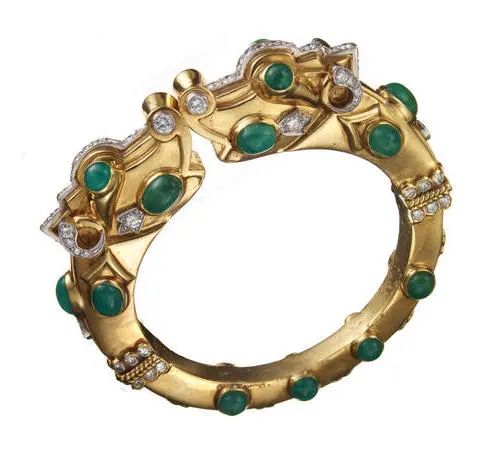
Elizabeth Taylor was particularly fond of animal jewelry. She immediately placed additional orders, acquiring a white enamel horse bracelet, a coral lion bracelet, and a double lion head pearl necklace that she wore in the movie “Ash Wednesday”.
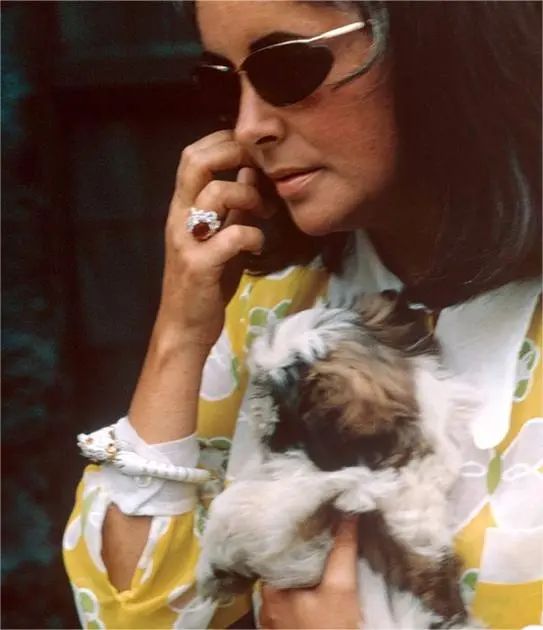
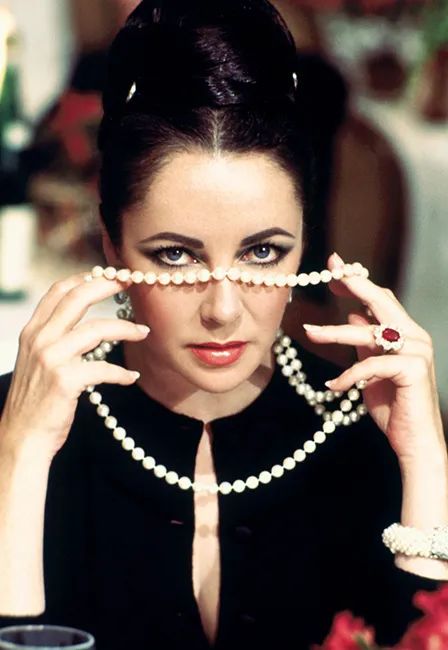
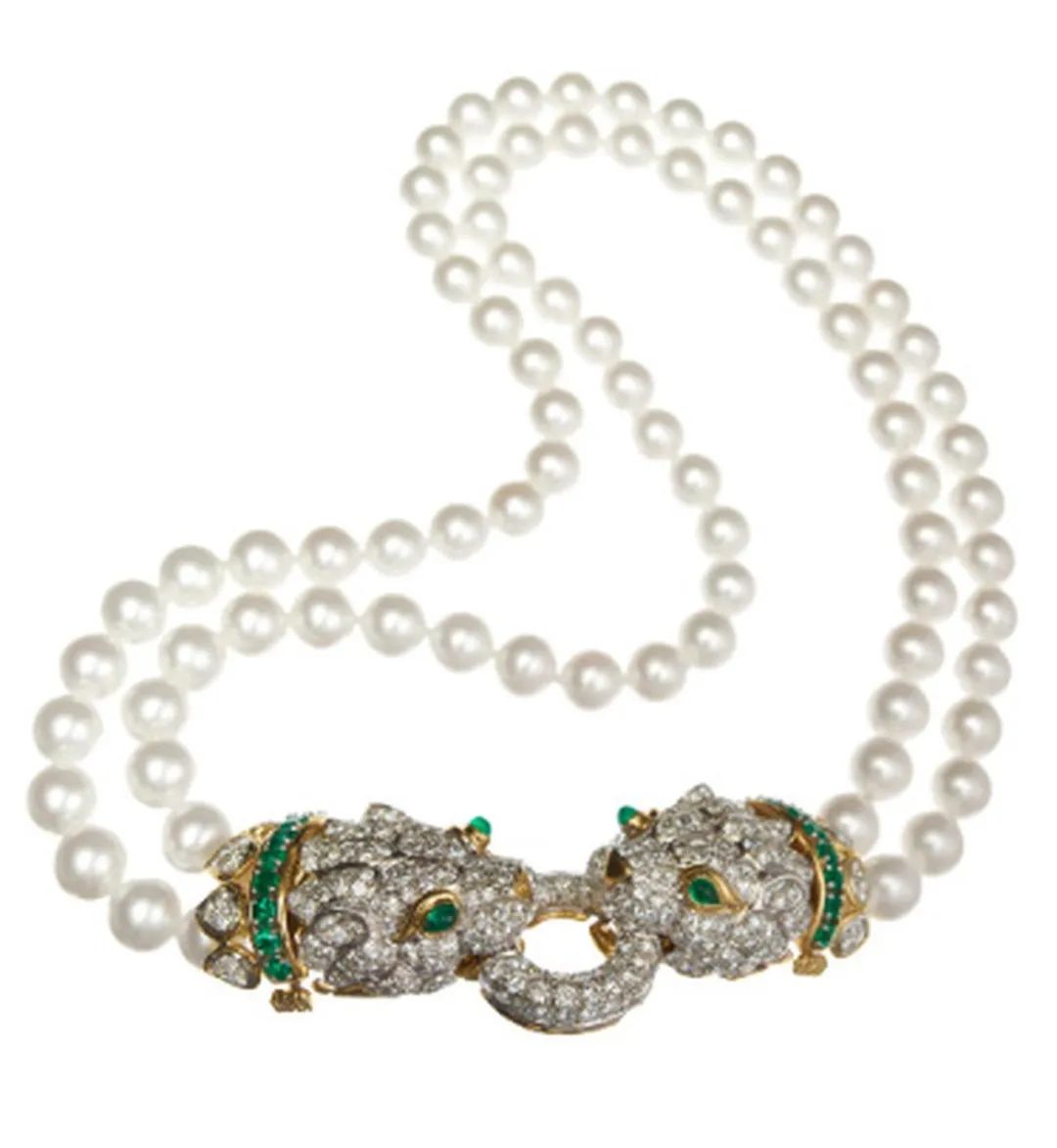
wearing David Webb’s double lion head pearl necklace
Soon, the first batch of colorful animal bracelets appeared on the wrists of the era’s “fashion rulers”. The Duchess of Windsor owned an enamel frog bracelet, a small surprise gift from the Duke of Windsor in 1964. She later acquired matching frog ear clips.

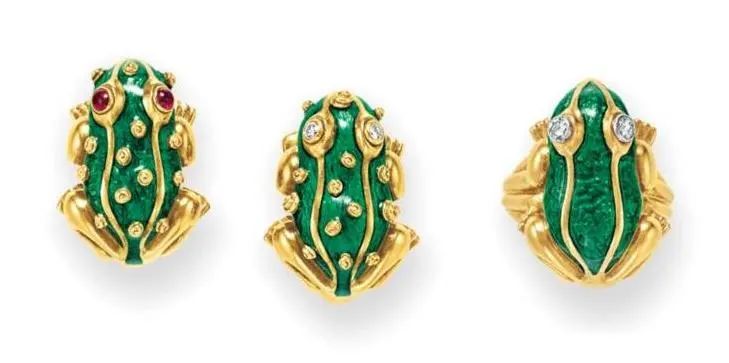
Diana Vreeland, the “fashion empress” of that era, also appreciated David Webb’s bold style. She collected his zebra bracelet, made of black and white striped enamel, set with diamonds, rubies, gold, and platinum. As the zebra is David Webb’s brand symbol, each zebra design has a unique stripe pattern.

Another legendary editor was Helen Gurley Brown, who helmed Cosmopolitan magazine. She chose a completely different style: a gold and ruby toucan bracelet.
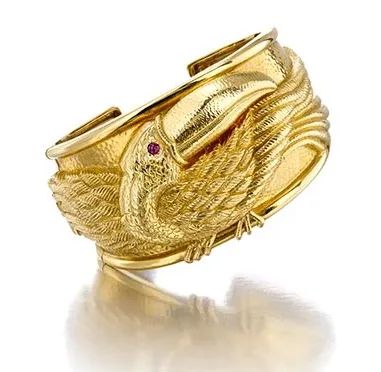
After seeing so many David Webb pieces collected by socialites, you might have noticed another characteristic of this designer. Indeed, it’s his preference for unconventional materials. This designer was a master of “unrestricted” material use, caring only about whether the colors and textures could best express the beauty in his mind, regardless of whether they were rare gemstones.
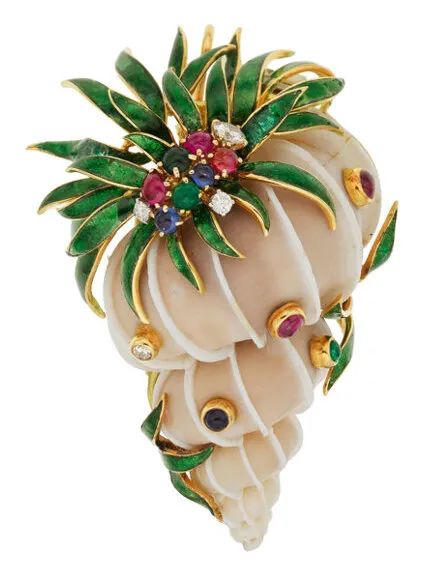
Shell, enamel, gold, diamonds, sapphires, rubies
Because David Webb viewed jewelry as an art form, in 1963, he published an article in the New York Herald Tribune titled “Why Not Hang Gems?” He wrote, “Although jewelry is more personal than painting, it should be viewed as great art, because it truly is. Jewelry should be exhibited to the public like other works of art. Not everyone can own great paintings or expensive jewelry, but everyone should be able to appreciate them.”

David Webb said, “This is my studio, and I will design anything I want.” For this master, any material was simply a medium to express his aesthetics and creativity. As he explored thousands of years of civilization in various museums, from gold to crystal, from enamel to diamonds, all were tools for creation at his fingertips.
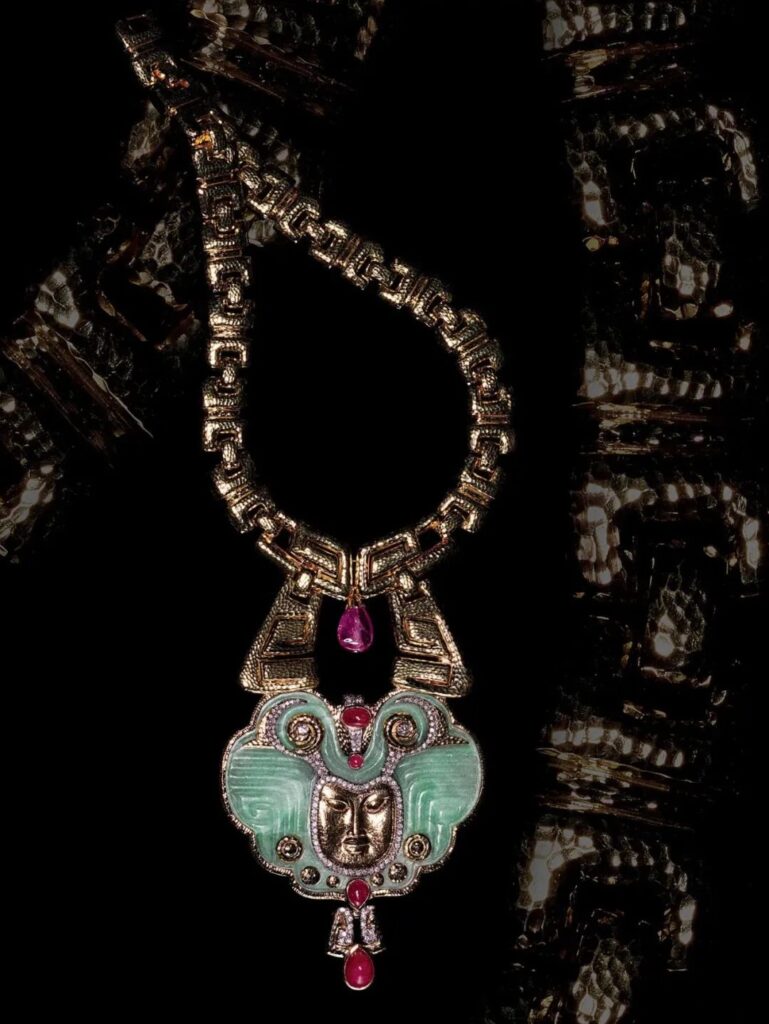
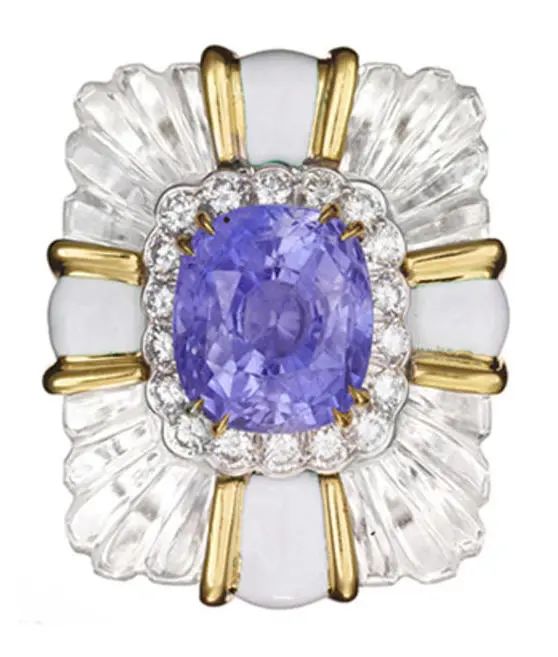
Marisa Berenson ring, 1969
Platinum, gold, sapphires, diamonds, carved crystal, enamel
Therefore, you can see many niche materials in his works, such as jade and coral common in the East, crystal and azurmalachite rarely seen in high jewelry, and even natural shells that can hardly be considered jewelry materials. Rather than value, he cared more about whether the colors and textures of these materials could achieve the image he envisioned.
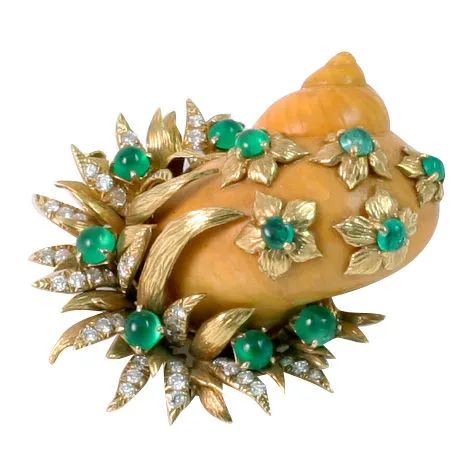
Conch shell, emeralds, gold, diamonds
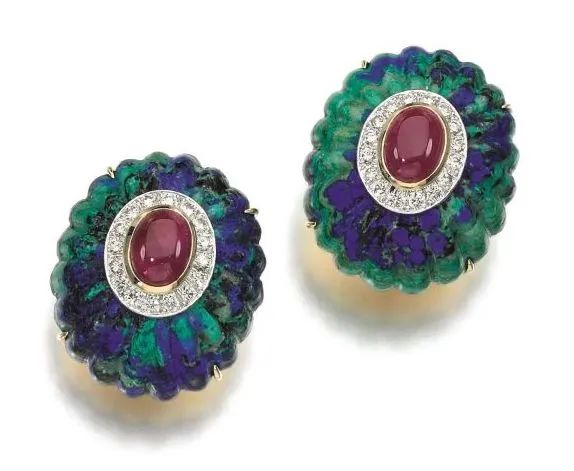
Azurmalachite, rubies, diamonds
Simultaneously, David Webb excelled at bold, vibrant color combinations and textural effects. This led him to favor carved gemstones, enamel, and textured gold techniques, often mixing them to create rich, lively visual effects. Perhaps all the animals he created could be included in “Fantastic Beasts and Where to Find Them,” but this doesn’t detract from the vitality of these imaginary creatures.
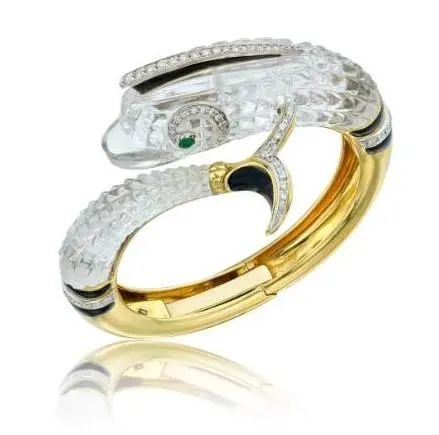
Gold, crystal, enamel, emeralds, diamonds
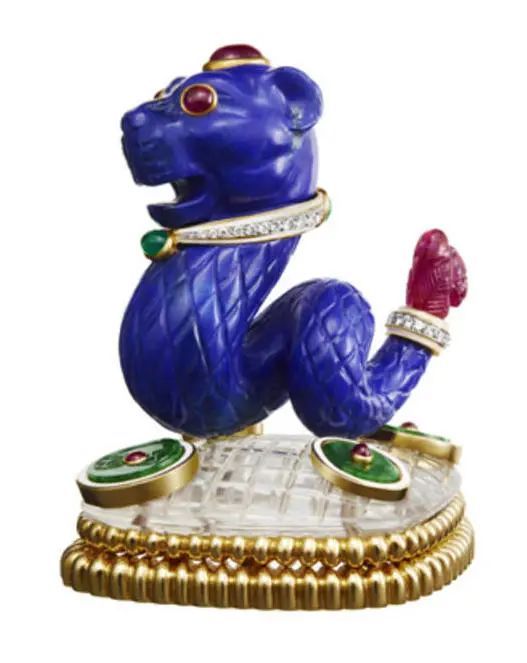
Platinum, gold, carved lapis lazuli, rubies, diamonds, emeralds, nephrite, crystal, enamel
So, you understand, the use of these niche materials inadvertently lowered the barrier to collecting his pieces. For example, this snail brooch, made of gold, platinum, and enamel, sold for 8,450 Australian dollars at Sotheby’s Australia in 2015. And this pair of shell ear clips, made of gold, coral, and shell, sold for $2,250 at Doyle auction house in New York in 2015.

Gold, platinum, enamel, diamonds
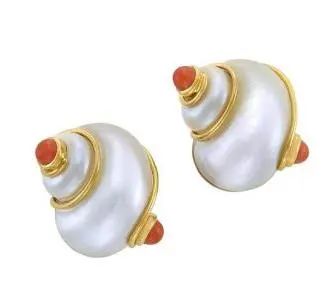
Gold, shell, coral
Another characteristic of David Webb’s design style is its timeless popularity. Why? Because he loved visiting museums, and many of his works were inspired by ancient civilizations from thousands of years ago. He particularly liked using totems as design elements, with many pieces being an intersection of modern and ancient, unified in a contradictory yet harmonious way.
This design style truly suits the modern woman’s wardrobe, as these pieces have no time attribute. Each is both ancient and avant-garde, impossible to assign to any era, and thus never goes out of style.

He could use textured gold to its fullest potential, with each piece having a unique texture. Even pure gold could make you feel incredibly distinctive, with a strong eye-catching effect.
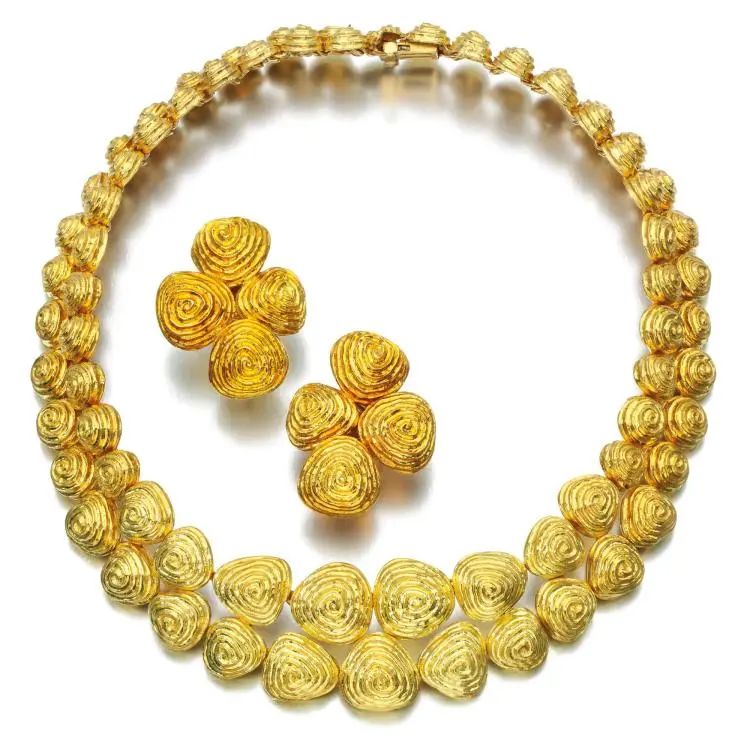
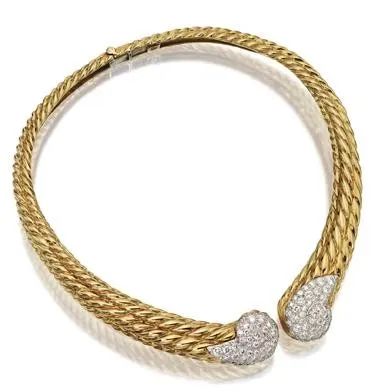
As a master of color, David Webb would use Seed pearls, amethysts, kunzites, azurmalachites, and other semi-precious materials to create dazzling and eye-catching jewelry, perfect for daytime wear. These pieces are ideal choices for both statement jewelry and vacation-style accessories.
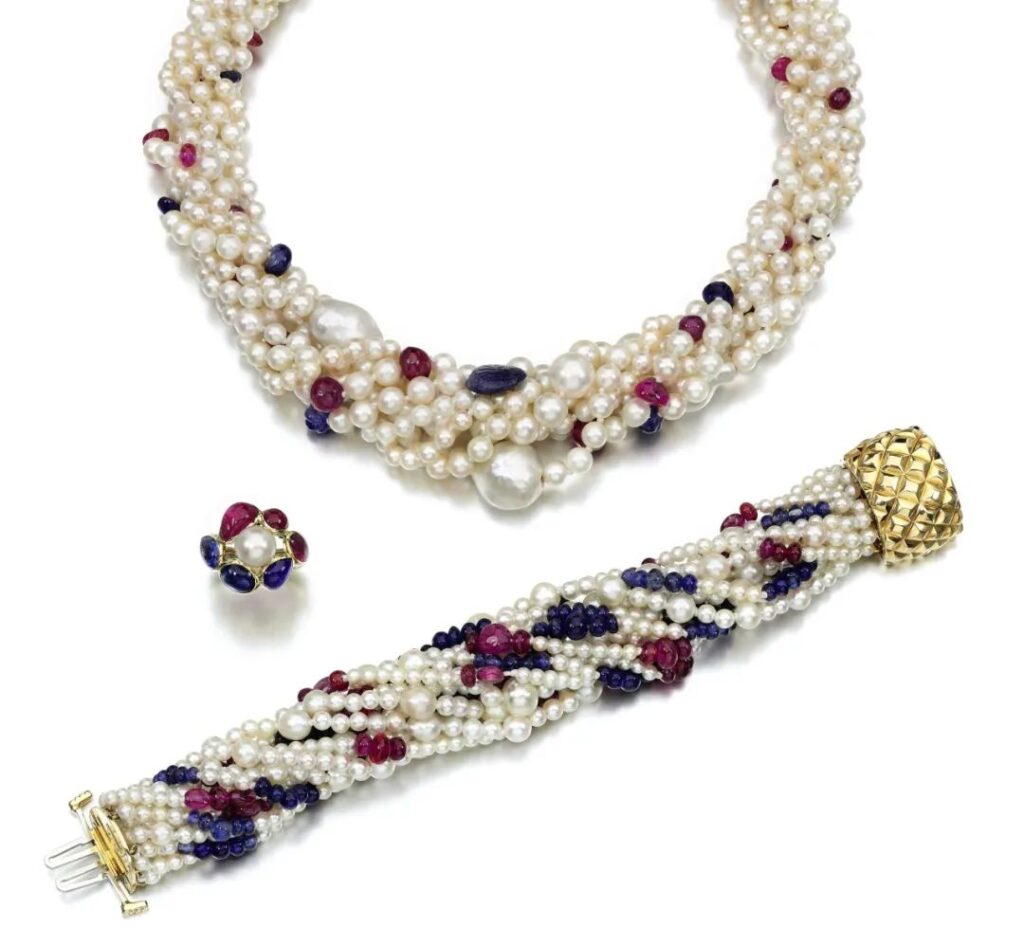
Pearls, sapphires, rubies

Gold, azurmalachite, diamonds

Enamel, diamonds, kunzite
David Webb also excelled in gemstone carving. While Cartier’s “Tutti Frutti” style is classic, he forged his own path, using large carved gemstones to directly form the main body of the jewelry. His signature twisted design, in particular, can appear on almost any material, abstract yet three-dimensional, and with a strong sense of movement.

Gold, carved crystal
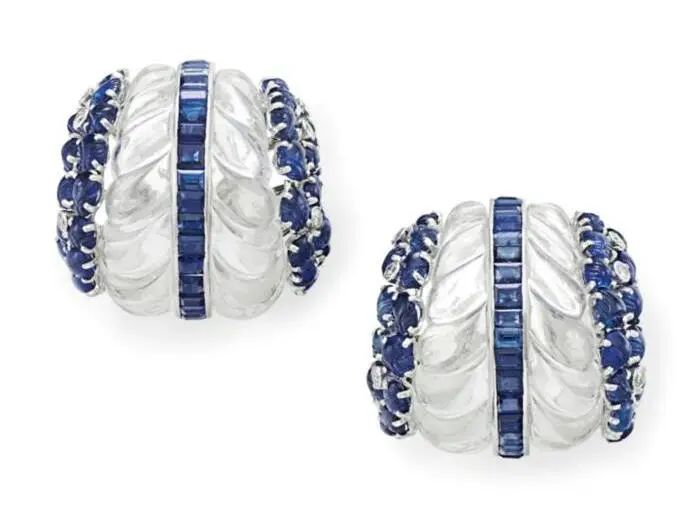
Carved crystal, sapphires
Are some of you already feeling tempted? Another reason to acquire David Webb pieces is that the brand continues to operate after the designer’s death, faithfully reproducing his original sketches. This naturally offers some price advantages. So, some might ask, which is more worth buying: vintage pieces or modern reproductions?
This depends on individual needs. If you’re considering it from a collecting perspective, it’s recommended to acquire pieces from auction houses and antique shops. For example, there were exquisite David Webb pieces in the Wolf family and Mellon family auctions. These old families, while appreciating his style, also chose designs with rare materials.
It’s crucial to pay attention to the date – pieces made before 1974 are undoubtedly more valuable.
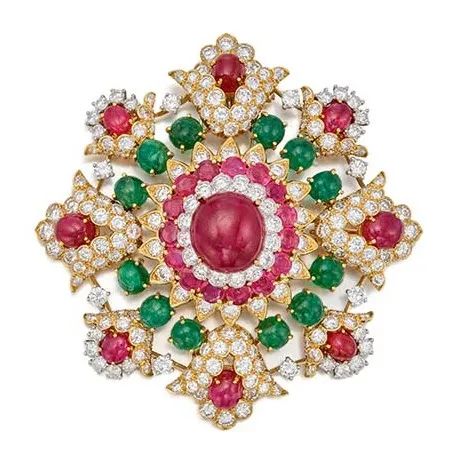
Gold, rubies, emeralds, diamonds
“The Wolf Family Collection: The American Spirit” auction
April 2023, Sotheby’s New York
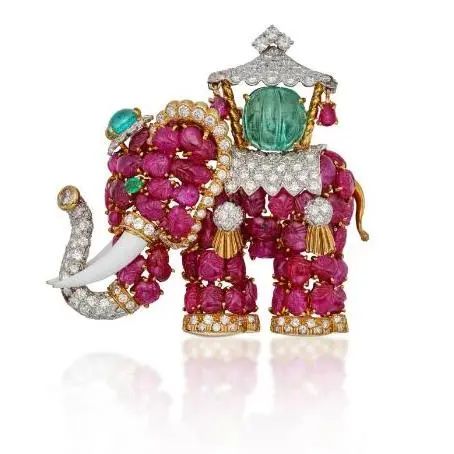
Rubies, emeralds, diamonds, enamel
“Mellon Family Jewelry” auction
June 2023, Sotheby’s New York
Besides designs using rare gemstones, some classic signature pieces like the “animal bracelets” and “shell series” mentioned earlier are also worth acquiring. Additionally, some rare styles have potential for appreciation.
For instance, the zodiac jewelry he started designing in 1968 is quite rare due to its late introduction and low production, seldom appearing in auctions. Their scarcity increases their collectible value.
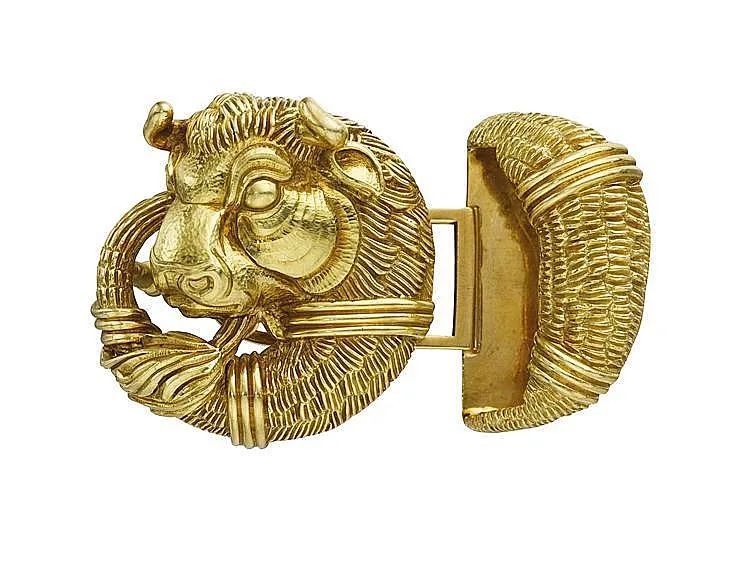
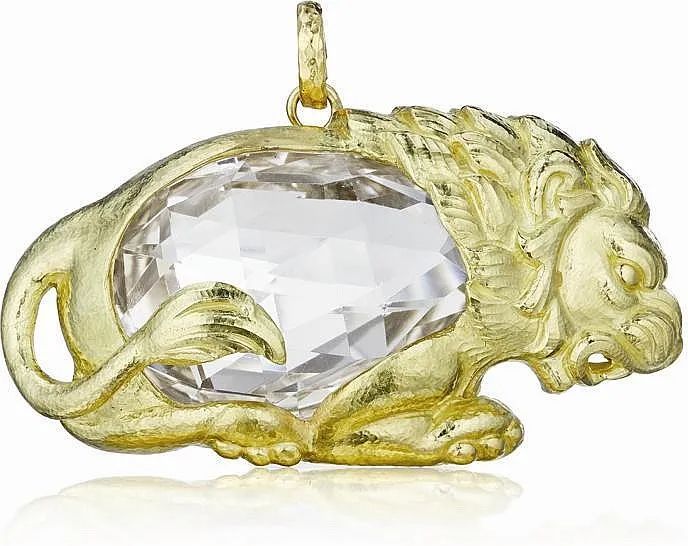
Gold, crystal
Pieces that showcase his artistry and craftsmanship are certainly more valuable. Many of these works are one-of-a-kind, with materials that are antiques themselves, making them truly rare treasures.
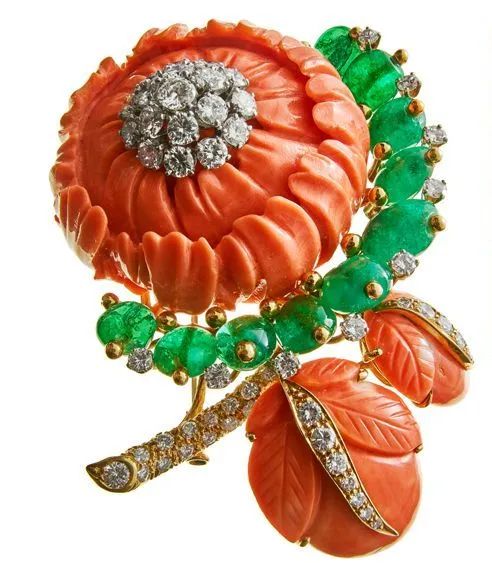
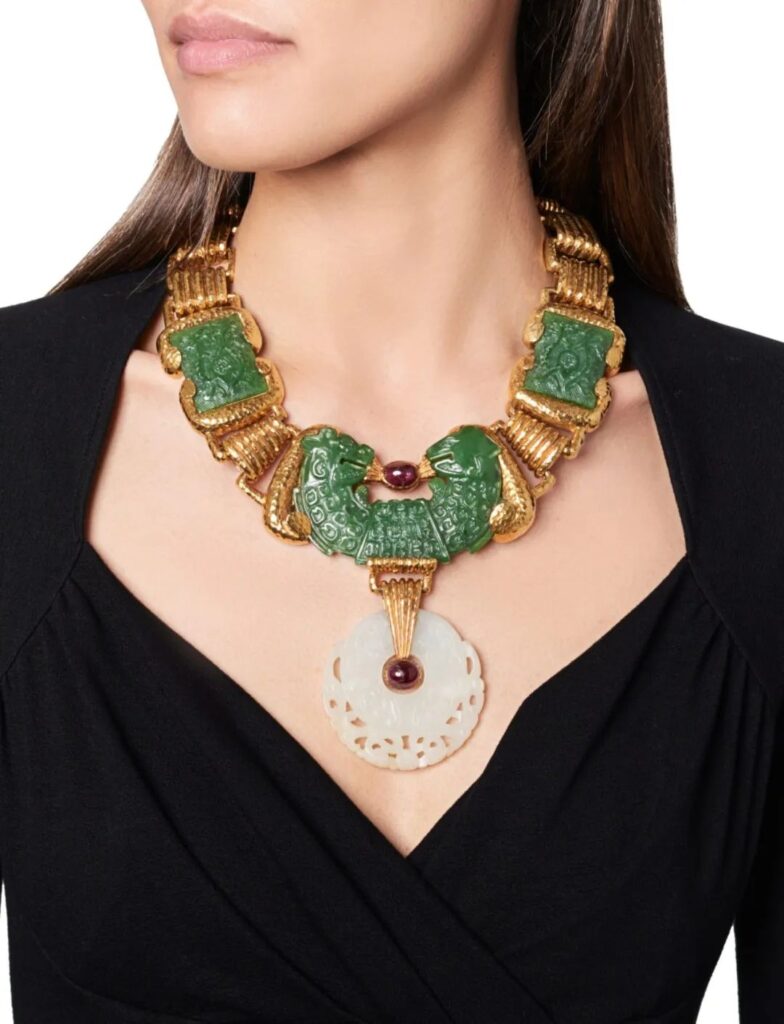
Circa 1972
If you’re buying for wearing purposes, you don’t need to focus too much on the era, and there are more purchasing options. The stores are still in business, so buying new pieces is fine. However, it’s best to choose the designer’s most representative designs, such as the animal series, shell series, and his signature techniques – jade carving or textured gold.
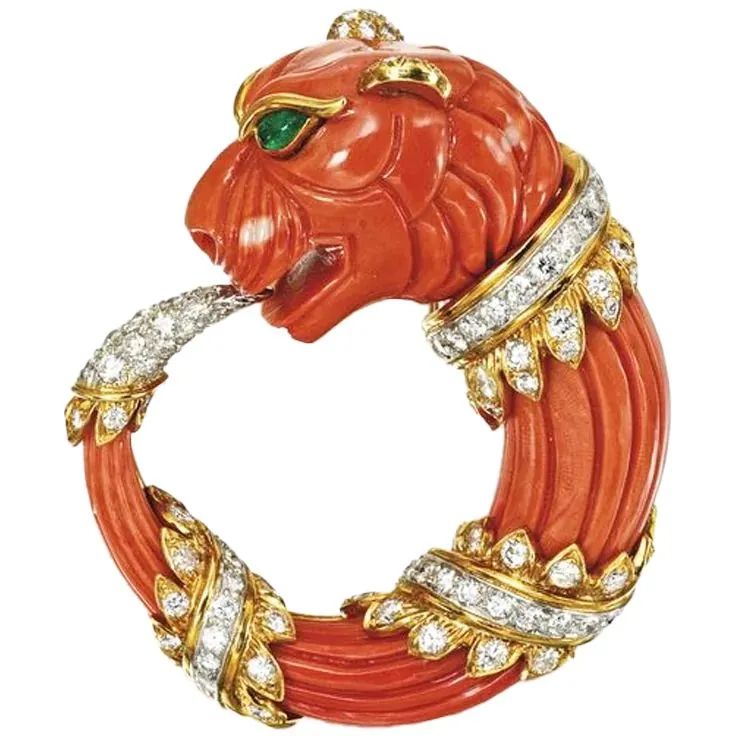
Gold, carved coral, diamonds, emeralds
Highly recommended are pieces featuring carved crystal twist elements. These are truly distinctive, as David Webb extensively used crystal, saying: “Crystal is the only white material in gemstones that can replace diamonds.” Especially designs combining crystal and diamonds – they’re truly maximized in both aesthetics and value!
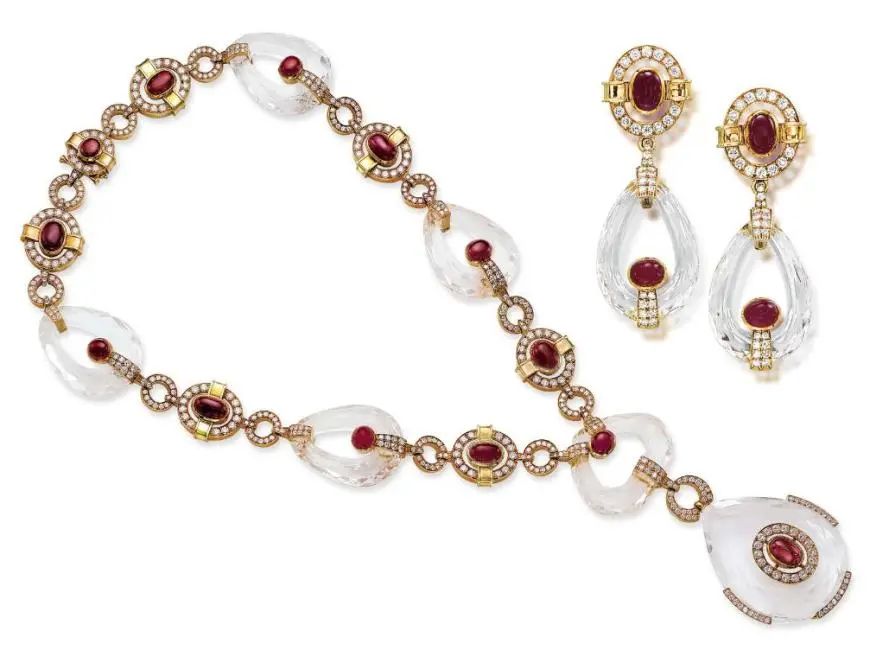
Gold, carved crystal, rubies, diamonds
This spring, your jewelry box might just need a vibrant new piece. This jewelry designer, highly esteemed by iconic socialites, will surely deliver a satisfactory answer for you.
David Webb: The Hidden Gem of Socialite Jewelry Collections – Why Are His Designs So Coveted?
Tweet
